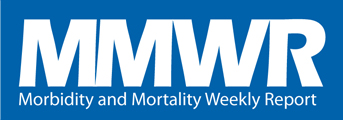MMWR News Synopsis for July 13, 2017
Measles Outbreak — Minnesota, April–May 2017
Doug Schultz
Communications Office Minnesota Department of Health
Office: 651-201-4993
Mobile: 612-250-2236
doug.schultz@state.mn.us
Recent U.S. and international measles cases are concerning and serve as a reminder of the seriousness of the disease and the importance of vaccination. Addressing parents’ questions and concerns and correcting misinformation about childhood vaccines through healthcare professionals and other trusted community leaders is critical in protecting children and communities from vaccine-preventable diseases. Since April 2017, a measles outbreak in Minnesota has been demonstrating the importance of maintaining high vaccination rates to protect communities from measles. Measles quickly spread in an under-vaccinated population, resulting in a large-scale and intensive public health response to prevent further illnesses and possible deaths. The outbreak also highlighted the importance of building trust with communities and identifying effective, culturally appropriate ways to address questions, concerns, and misinformation about the MMR vaccine.
Mortality from Amyotrophic Lateral Sclerosis and Parkinson’s Disease Among Different Occupation Groups — National Occupational Mortality Surveillance, United States, 1985–2011
CDC Media Relations
404-639-3286
Occupations associated with higher socioeconomic status, such as computer and mathematical; architecture and engineering; legal; and education, training, and library had elevated mortality from amyotrophic lateral sclerosis (ALS) and Parkinson’s disease. A new study found higher percentages of death from ALS and Parkinson’s disease among workers in occupations associated with higher education and income, or socioeconomic status (SES). Workers in these occupations include mathematicians, architects, engineers, lawyers, and teachers. Although the reasons for the findings of this study are not well understood, it provides information for future targeted studies among workers in higher SES occupations to identify risk factors for ALS and Parkinson’s disease. ALS, also known as Lou Gehrig’s disease, and Parkinson’s disease affect more than 1 million Americans, yet the role of occupation in these diseases is relatively under studied and poorly understood.
Racial and Geographic Differences in Breastfeeding — United States, 2011–2015
CDC Media Relations
404-639-3286
Despite overall increases in breastfeeding rates for black and white infants in the United States over the past decade, a racial gap persists – particularly in the South and the Midwest. Proven interventions to support breastfeeding for black women are needed. The National Immunization Survey tracks national estimates of breastfeeding initiation and duration among black and white infants. Of the 34 states (including Washington, D.C.) sampled, initiation rates were significantly lower among black infants than white infants in 23 states. In 14 of the 23 states – mostly in the South and Midwest – the difference was at least 15 percentage points. Interventions specifically addressing the barriers to breastfeeding for black women are needed.
Pneumococcal Vaccination Among Medicare Beneficiaries Following the Advisory Committee on Immunization Practices Recommendation for Routine Use of 13-valent Pneumococcal Conjugate Vaccine and 23-valent Pneumococcal Polysaccharide Vaccine for Adults Aged ≥65 Years
CDC Media Relations
404-639-3286
Providers should ensure that older adults initiate and complete the recommended pneumococcal vaccination series to reduce their risk of contracting pneumococcal disease. To reduce the burden of pneumococcal disease, providers should ensure that older adults initiate and complete the recommended pneumococcal vaccination series. CDC analyzed claims for vaccination submitted for reimbursement to the Centers for Medicare & Medicaid Services (CMS) to help measure PCV13 and PPSV23 vaccination uptake among adults aged ≥65 years before and after implementation of revised recommendations in September 2014. By September 18, 2016, 43.2 percent of Medicare Parts A and B beneficiaries aged ≥65 years had claims for at least one dose of PPSV23 (regardless of PCV13 status), 31.5 percent had claims for at least one dose of PCV13 (regardless of PPSV23 status), and 18.3 percent had claims for at least one dose each of PCV13 and PPSV23.
Notes from the Field:
- None
Quick Stats:
- Age-Adjusted Death Rates Attributed to Alzheimer’s Disease Among Persons Aged ≥65 Years, by State — United States, 2015
###
U.S. DEPARTMENT OF HEALTH AND HUMAN SERVICES
CDC works 24/7 protecting America’s health, safety, and security. Whether diseases start at home or abroad, are curable or preventable, chronic or acute, stem from human error or deliberate attack, CDC is committed to respond to America’s most pressing health challenges.

